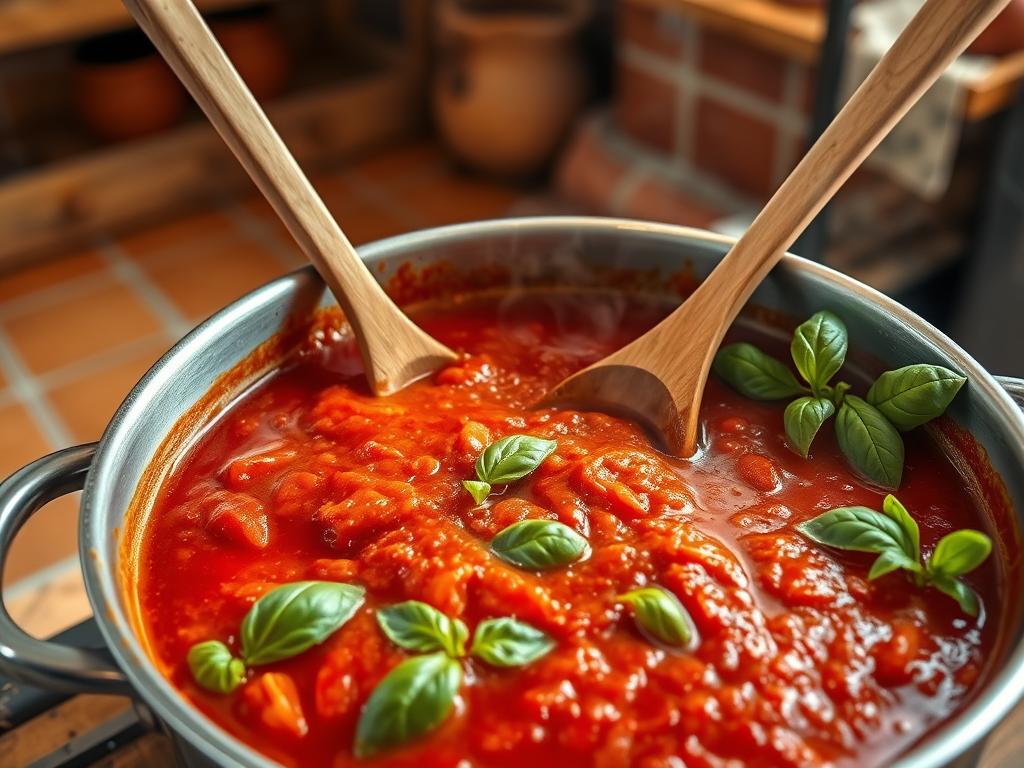There’s something magical about recipes that travel across oceans and generations. Picture this: you’re stirring a pot of rich tomato sauce, its aroma filling the air, and with each swirl, you’re connected to centuries of tradition. That’s the magic of Spaghetti Marinara—a timeless pasta dish that turns everyday cooking into a shared, flavorful journey through history.
You might be surprised to learn the name “marinara” has nothing to do with seafood. Italian food historians like Paesana explain it comes from “la marinara” – the seafaring way of cooking. Sailors favored this simple sauce because it used shelf-stable ingredients like tomatoes, garlic, and herbs. No fresh fish required!
Today, this classic recipe means different things worldwide. In Australia, they load it with shrimp and mussels. But here in the U.S., we cherish the original version – pasta tossed in vibrant red sauce that’s ready in 30 minutes. Whether you’re new to cooking or a seasoned pro, mastering this dish means joining a global community of food lovers.
Key Takeaways
- Marinara sauce gets its name from sailors (“marinara”), not seafood ingredients
- The classic version uses simple, pantry-friendly components
- Australian interpretations often include seafood, unlike traditional recipes
- This dish connects modern cooks to centuries of culinary history
- Perfect for weeknights – ready faster than takeout
- Adaptable base for adding proteins or vegetables
Introduction to Spaghetti Marinara
There’s a reason this classic dish is a weeknight hero: minimal effort, maximum flavor. At its core, authentic marinara sauce celebrates simplicity – just ripe tomatoes, golden olive oil, and fragrant garlic dancing in your skillet. No fancy techniques or rare ingredients required.
You’ll love how these basic pantry staples transform into something extraordinary. Canned San Marzano tomatoes burst with natural sweetness, while fresh basil adds a peppery kick. The magic happens when these elements simmer together, creating layers of rich flavor that jarred sauces can’t match.
What makes this recipe truly special? It adapts to your kitchen. Swap onions for shallots, add chili flakes for heat, or toss in sautéed mushrooms. We’ve seen home cooks make it their own while keeping that essential Italian soul – proof that great cooking starts with confidence, not complexity.
Ready in 30 minutes? Absolutely. The sauce bubbles away while your pasta cooks, making this dish perfect for busy evenings. You’ll taste the difference homemade makes, from the vibrant color to the aroma that says “dinner’s ready” in every language.
History & Cultural Significance
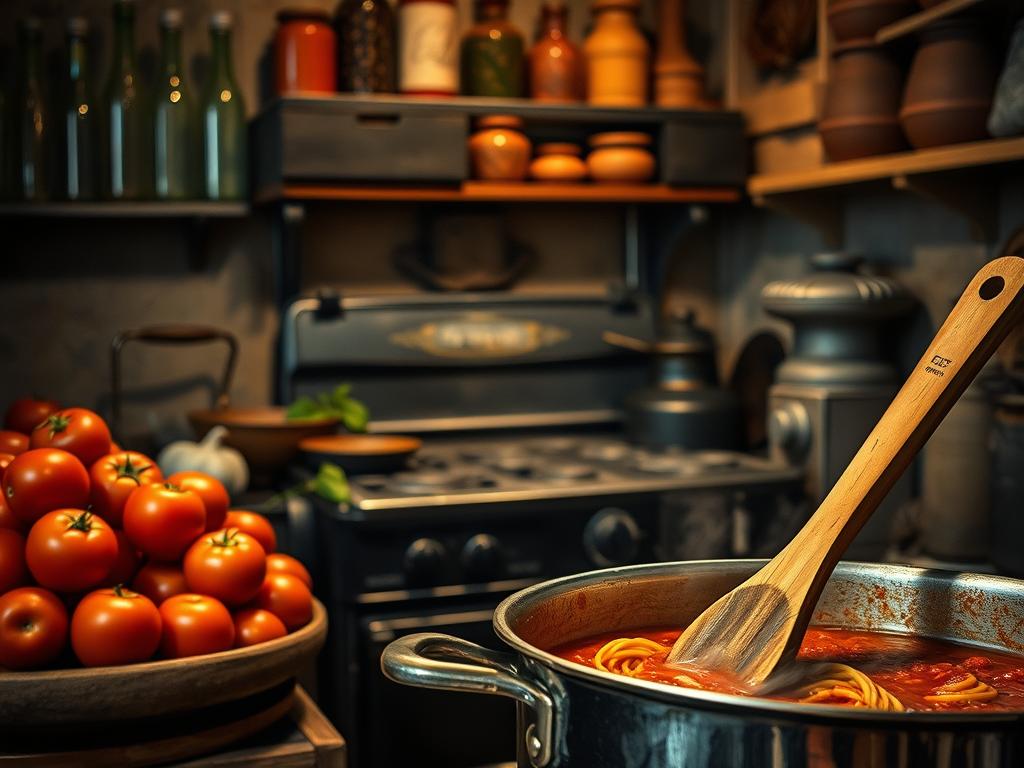
History has a funny way of hiding in plain sight. While we call it marinara sauce, most Italians simply say “sugo al pomodoro” – tomato sauce. The real story begins with sailors’ ingenuity. Imagine 16th-century cooks on ships, turning dried herbs and canned tomatoes into hearty meals that could survive months at sea.
We love how this sauce became a global citizen. From Naples to New York, each region added its spin while keeping the soul intact. In Spain, they stir in smoked paprika. Greek versions might feature oregano and feta. Yet the core remains: bright tomato flavor with garlic’s warmth.
| Traditional Italian | Mediterranean Twist | Latin American Style |
|---|---|---|
| San Marzano tomatoes | Kalamata olives | Roasted poblanos |
| Fresh basil | Feta cheese | Cotija cheese |
| Extra virgin olive oil | Lemon zest | Cilantro garnish |
You’ll notice something beautiful – no matter where the dish travels, it keeps its welcoming spirit. That’s why we think of it as edible history. Every time you simmer tomato sauce, you’re part of a 500-year conversation between sailors, grandmothers, and hungry adventurers.
Today’s recipes honor that legacy. Whether you’re adding anchovies like Sicilian fishermen or keeping it vegan, you’re writing the next chapter. And isn’t that the best way to cook? With one foot in tradition, the other dancing toward new flavors.
Essential Ingredients for an Authentic Marinara
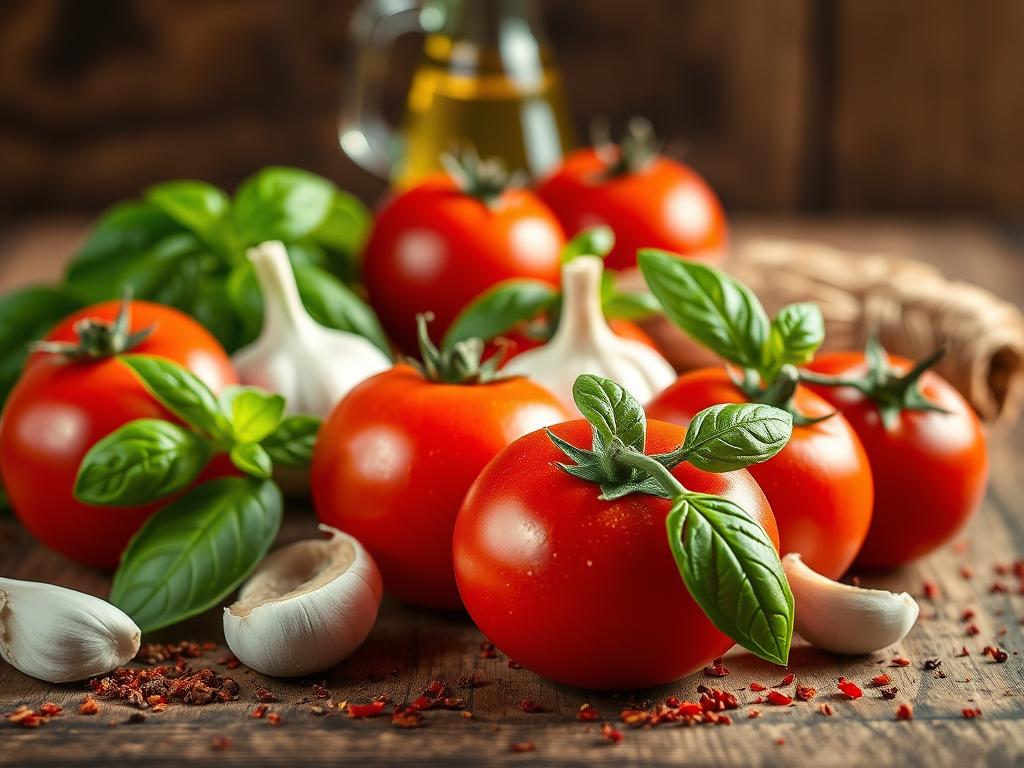
Great cooking starts with great ingredients – especially when there’s nowhere to hide. For this classic sauce, every component plays a starring role. Let’s break down what makes the magic happen.
The Flavor Builders
Your shopping list is short but mighty. San Marzano tomatoes from Italy’s volcanic soil bring natural sweetness and low acidity. Brands like Bianco de Napoli and Mutti consistently deliver that rich, velvety texture we love.
Extra virgin olive oil forms the golden base. Look for bottles labeled “cold-pressed” – their peppery finish balances the tomatoes perfectly. Fresh garlic and sweet onion create the aromatic foundation, while basil leaves add that final herbal spark.
Smart Swaps & Fixes
No San Marzanos? Use regular whole peeled tomatoes and add ½ tsp sugar. If your sauce tastes sharp, try this fix order:
| Issue | First Fix | Backup Plan |
|---|---|---|
| Too acidic | Add ¼ tsp salt | 1 tsp tomato paste |
| Too thin | Simmer longer | Add basil stems |
| Lacks depth | Toast garlic | Pinch of red pepper |
Tomato passata works wonders for quick sauces – thicker than crushed tomatoes but lighter than puree. And remember: good olive oil is non-negotiable. It’s the difference between “dinner” and “daaaamn, you made this?”
Step-by-Step Preparation Guide
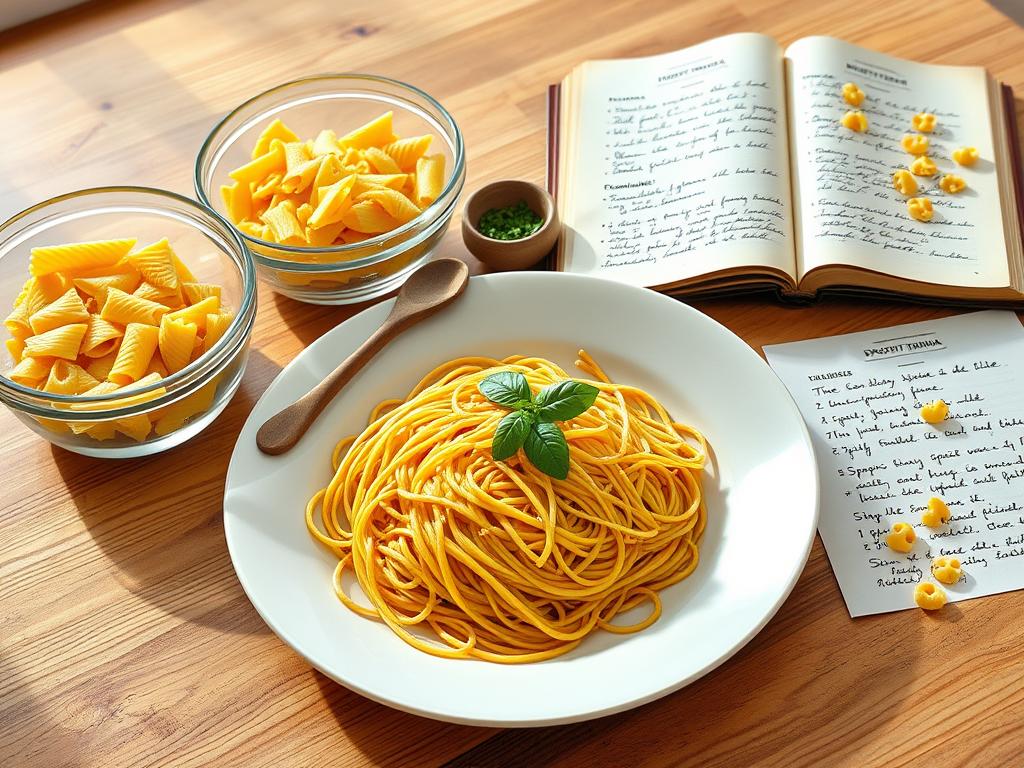
Mastering this dish comes down to technique – we’ll show you how to build layers of flavor while nailing that perfect saucy texture. Let’s turn your kitchen into an Italian trattoria!
Sautéing Aromatics and Flavor Base
Heat 3 tablespoons olive oil in your largest skillet over medium heat. Add 1 diced onion and 4 minced garlic cloves with a pinch of salt. Cook 4-5 minutes until translucent – watch closely to prevent browning!
This sauce foundation works best when ingredients soften without caramelizing. Stir frequently and lower the heat if needed. The goal? Sweet, mellow flavors that let tomatoes shine.
Pasta Cooking and Emulsifying the Sauce
While aromatics cook, bring a pot of salted water to boil. Add 12oz pasta and set timer for 1 minute less than package instructions. Reserve 1 cup starchy water before draining.
Here’s the magic: Add drained pasta to your simmering sauce with ½ cup reserved water. Cook 2 minutes on medium-high, tossing constantly. The starch-oil emulsion creates that glossy, clingy texture pros love!
| Traditional Technique | Modern Hack |
|---|---|
| Hand-crushed tomatoes | Quality canned tomatoes |
| Wooden spoon stirring | Shaking pan to emulsify |
| 30-minute simmer | 15-minute quick sauce |
Pro tip: Taste before serving! Adjust salt or add basil leaves for freshness. Your sauce should coat the back of a spoon – if too thick, splash in more pasta water. Too thin? Simmer 2 extra minutes.
Seafood Variations vs. Traditional Options
Who says tradition can’t have a delicious twist? While the classic tomato-based sauce shines in its simplicity, adding seafood transforms it into a coastal masterpiece. Imagine plump prawns and tender calamari mingling with garlicky tomato goodness – that’s the magic of modern interpretations.
Here’s the pro move: Sear your seafood mix first. Heat olive oil until shimmering, then cook each type separately. Fish and jumbo shrimp need 30 seconds per side, while calamari requires just 1 minute total. Remove them quickly to avoid rubbery textures – they’ll rejoin the party later.
That golden crust left in the pan? That’s flavor gold. Deglaze with white wine or broth, scraping up those browned bits. Now build your sauce as usual – tomatoes, garlic, herbs – letting the oceanic essence infuse every bite.
| Seafood Type | Cooking Time | Flavor Contribution |
|---|---|---|
| Fish Fillets | 30 sec/side | Rich umami base |
| Large Prawns | 30 sec/side | Sweet briny notes |
| Calamari Rings | 1 minute total | Delicate texture |
You’ll love how this method preserves each ingredient’s integrity. The pasta still stars, but now shares the spotlight with ocean treasures. Serve it with crusty bread to mop up every last drop of that sauce – your guests will swear they’re dining seaside.
Keep both versions in your recipe arsenal. The traditional dish comforts on hectic nights, while the seafood upgrade turns dinner into an event. Either way, you’re celebrating centuries of culinary evolution – one forkful at a time.
Tips and Tricks for Perfect Marinara Sauce
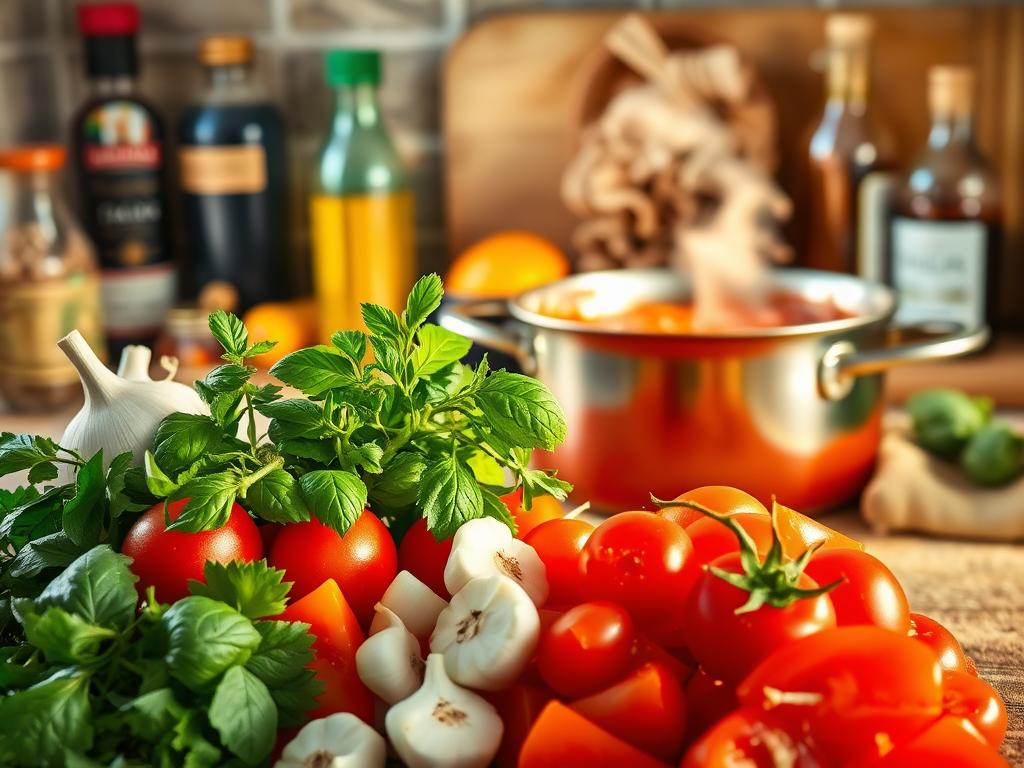
Transform your homemade sauce from good to unforgettable with these pro tips. We’ve gathered kitchen-tested methods that solve common issues while adding exciting flavor layers. Let’s turn your marinara sauce into a showstopper!
Is your tomato base too sharp? Reach for the salt first – it naturally balances acidity better than sugar. Only if that doesn’t work, add ½ tsp tomato paste or a pinch of brown sugar. For heat lovers, red pepper flakes bloomed in olive oil create a warm, complex kick without overpowering.
Three game-changing upgrades we swear by:
- Parmesan rind: Simmer it in the sauce for 20 minutes to infuse savory depth
- Grated veggies: Carrots or zucchini melt into the base, boosting nutrition invisibly
- Red wine: Deglaze your pan with ¼ cup before adding tomatoes for sophistication
Time management matters. If using meat, brown it first with aromatics for richer flavor. For vegetarian versions, try sautéed mushrooms. Always reserve pasta water – its starch helps the sauce cling beautifully to noodles.
“The difference between good and great? Taste five times while cooking – adjust boldly!”
Remember: Great marinara sauce balances tradition with personal flair. Whether you’re simmering for 30 minutes or whipping up a quick version, these tweaks make every bite memorable. Now go forth and sauce confidently!
Authentic Spaghetti Marinara: Recipe Secrets
Unlocking restaurant-quality results at home comes down to three things: precise measurements, smart timing, and flavor balance. We’ve perfected the ratios through countless tests – 1½ teaspoons red pepper flakes deliver gentle heat without overwhelming, while 32oz of tomato sauce coats each strand beautifully.
Heat your oil with pepper flakes first – this infuses the base with subtle warmth. When garlic hits the pan, set a timer for 20 seconds. Any longer risks bitter notes. Golden onions follow, cooked just until they release natural sweetness. This foundation makes your sauce sing.
Here’s our pro trick: Simmer covered for exactly 10 minutes. This concentrates flavors while keeping the sauce bright. Toss cooked pasta with reserved starchy water – it transforms the texture from “sauced” to “velvety embrace.”
“Great marinara isn’t about complexity – it’s about honoring each ingredient’s moment.”
Finish with basil added off-heat to preserve its vibrancy. Grated Parmesan? Optional but glorious. Whether it’s Tuesday dinner or Sunday feast, this recipe proves simple ingredients create extraordinary meals when handled with care.
Pairing and Serving Suggestions
The final flourish turns a great meal into an unforgettable experience. Let’s craft a spread that celebrates your homemade sauce while balancing textures and flavors. Whether you’re hosting friends or enjoying a quiet dinner, these pairings make every bite sing.
Side Dishes and Complementary Salads
Crunchy garlic bread remains our top pick for sauce-dipping joy. For lighter options, try peppery arugula tossed with lemon vinaigrette. Roasted broccoli or sautéed spinach add vibrant color and nutrients without overpowering the main dish.
Protein lovers can elevate their meal with beef meatballs or grilled shrimp. Homemade versions let you control ingredients – mix ground turkey with fennel for a twist, or keep it classic with parmesan cheese and breadcrumbs.
Wine, Garnish, and Presentation Ideas
A bold Chianti complements the sauce’s acidity beautifully. For white wine fans, Pinot Grigio’s crispness cuts through richness. Finish with fresh basil leaves and a snowfall of grated parmesan cheese – though traditionalists skip cheese on seafood versions.
Serve family-style in a rustic bowl for that trattoria vibe. Add chili oil drizzle for drama, or lemon wedges for brightness. Remember: Great meals aren’t just eaten – they’re experienced through all five senses!
🌮 Transform Your Dinner Routine with the Easy Walking Taco Casserole! 🌮
Looking for a dish that will wow your family and friends without the fuss? Our Easy Walking Taco Casserole is not only a crowd-pleaser but also a breeze to whip up, making it perfect for gatherings, weeknight dinners, or even game day celebrations! Imagine layers of deliciousness that everyone can enjoy—what’s not to love?
Don’t miss out on this sensational recipe that will have everyone coming back for seconds. Click the link below to dive into the full article and discover how to make this delightful dish today!

